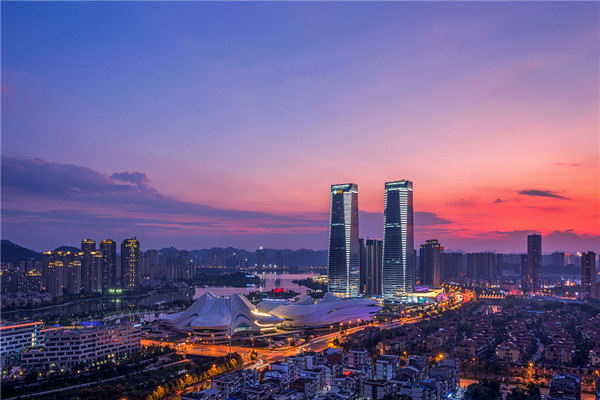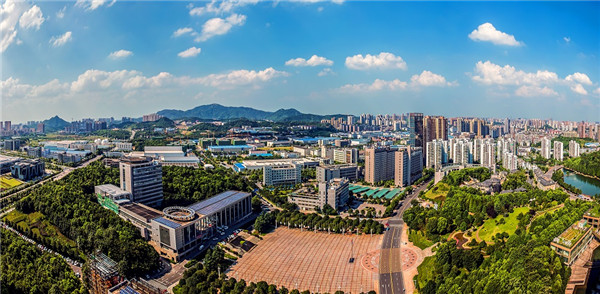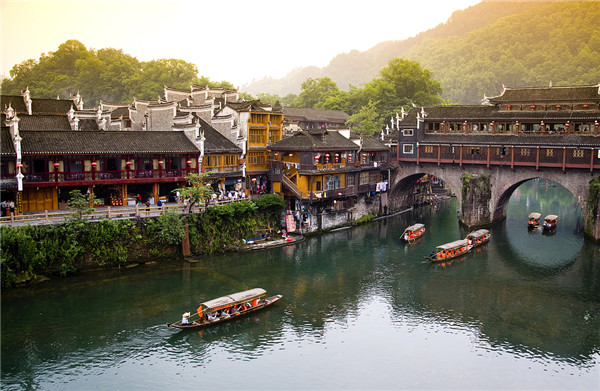Hunan's advantages for investment

Location
Hunan, which literally means the southern part of Dongting Lake, is located in the central part of the Chinese mainland. Hunan is next to Jiangxi province in the east, Chongqing municipality and Guizhou province in the west, Guangdong province and Guangxi Zhuang autonomous region in the south, and Hubei province in the north. Lying in the transitional zone between the country’s eastern coastal areas and the midwest regions, and the junction part of the Yangtze River Economic Belt and the Coastal Open Economic Zone, the province enjoys an advantageous geographic position connecting the east and west, and linking the north and south of the country.

Transport
Hunan, lying in the middle reaches of the Yangtze River, which is China's golden waterway, enjoys convenient transport connections, and has a comprehensive transport system of waterways, highways and airports. The province is expected to accelerate construction of a comprehensive transport junction, in order to set up a new highland for inland opening-up. In 2018, Hunan's fixed assets investment in transport reached 64.7 billion yuan ($9.42 billion). By the end of 2018, the length of highways in the province reached 240,000 kilometers, and the length of railway lines was 5,021 km, including 1,729.6 km of high-speed railways.
Scientific research
Over the past 40 years, Hunan has constantly upgraded its ability in scientific and technological innovation, which has created a powerful growth engine and support for the province's socio-economic development. In 2017, Hunan's comprehensive innovation strength climbed to 12th in the country, and the contribution rate of scientific and technological progress increased from 42.5 percent in 2000 to 55.9 percent in 2017. A wide range of scientific and technological achievements have been achieved in the province, including super high-yield hybrid-rice, super computers, superfast trains, and medium-speed maglev train systems. By the end of 2018, there were eight national and 24 provincial high-tech zones, and 1,191 research and development institutions in Hunan. The number of high-tech enterprises accounted for 20.6 percent of the province's industrial enterprises above designated size, bringing in industrial output value exceeding one trillion yuan.

Resources
As a well-known tourist resort, Hunan has many places of interest, including two world natural heritage sites – Zhangjiajie Wulingyuan Scenic and Historic Interest Area, and Shaoyang Langshan Mountain – and 22 national tourist attractions. In 2018, Hunan received 750 million domestic visitors, a year-on-year increase of 12.5 percent.
Hunan province has large reserves of nonferrous metals and non-metal ores. Discoveries of 144 minerals had been made by the end of 2017, accounting for 83.72 percent of discovered minerals in China. Viewed as one of the most precious gene banks in China and the world, Hunan has various and abundant biological resources, including nearly 5,000 spermatophyte species, ranking seventh in the country.

Industrial base
Hunan has a complete industrial system, with 10 competitive industrial clusters, including engineering machinery, electronic information and new materials, petrochemical engineering, and automobile and spare parts. There are 14 national and 67 provincial development zones, and one comprehensive bonded zone in the province. Several nationally renowned enterprises are settled there, such as Sany Group, China's leading machinery equipment maker, and Zoomlion, China's top construction machinery manufacturer.
The tertiary sector has also been rising rapidly in recent years, while broadcasting and TV, and the publishing industry lead the country. Changsha, the capital city, became the first Chinese city to be recognized as a UNESCO Creative City in media arts in 2017.
Hunan's economic situation in 2018
In 2018, the province's GDP was 3.64 trillion yuan, increasing by 7.8 percent year-on-year. The added value of the primary industry sector was 308.36 billion yuan, increasing by 3.5 percent year-on-year; the added value of the secondary industry sector was 1.45 trillion yuan, a year-on-year increase of 7.2 percent; and tertiary industry climbed to 1.89 trillion yuan, up 9.2 percent year-on-year. The contribution rate of primary, secondary and tertiary industries to economic growth was 4 percent, 40.9 percent and 55.1 percent. Its per capita GDP was 52,949 yuan, an increase of 7.2 percent year-on-year.
In recent years, Hunan has made great efforts to deepen supply-side structural reform, and carry forward an innovation-driven development strategy to set up a modern industrial system.
MOST POPULAR
- 1 China to continue opening up its mega-market to world: premier
- 2 Policies concerning expats, foreign enterprises in November 2025
- 3 China to enhance convenience for inbound tourism: minister
- 4 Departure tax refund applications surge 285% as inbound tourism rebounds
- 5 China's foreign trade up 3.6% in first 11 months of 2025







